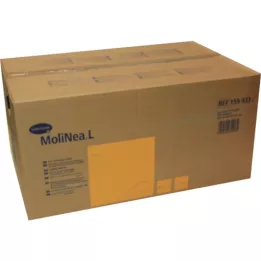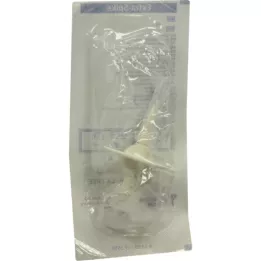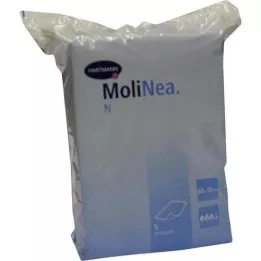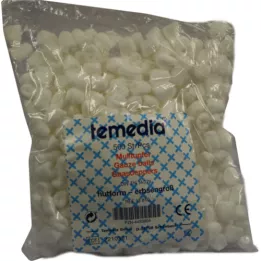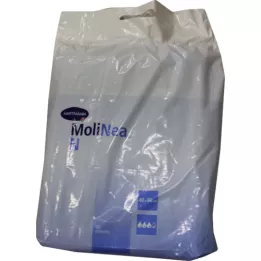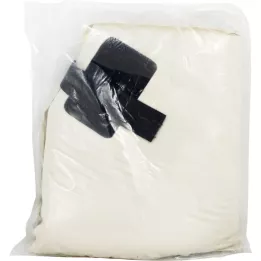
EMLA cream, 30 g
For local pain replacement (local anesthetic).
Manufacturers: Aspen Germany GmbH
PZN: 00235016
Dosage: Creme
Content: 30 g
Reward Points: 335
Availability: Out of stock
$69.74
from German pharmacies to your address

Instructions for use for EMLA cream, 30 g
Instructions for use for: EMLA cream, 30 g
EMLA Cream Applications: A means of local analysis (local anesthetic).
For risks and side effects, read the package leaflet and ask your doctor or pharmacist.
LEAFLET: INFORMATION FOR THE USER
EMLA cream
Active ingredients: lidocaine and prilocaine
Read the entire leaflet carefully before starting using this medicine. This medicine is available without prescription. However, in order to achieve the best possible treatment success, EMLA must be used properly.
- Lift the package leaflet. You might want to read it again.
- Ask your pharmacist if you need more information or advice.
- If one of the listed side effects you significantly affect it or notice side effects that are not specified in this information information, please inform your doctor or pharmacist. See section 4.
This leaflet contains:
- What is EMLA and what is it used for?
- What do you need to consider before the application of EMLA?
- How is EMLA to apply?
- WHAT SIDE EFFECTS ARE POSSIBLE?
- How is EMLA to keep?
- ADDITIONAL INFORMATION
1. What is EMLA and what is it used for?
1.1 EMLA is a means of local analysis (Local anesthetic).
1.2 EMLA is applied to:
Adult:
- for pain control before mechanical wound cleaning of ulcers of legs (ulcus cruris).
Adult and adolescents from 12 years:
- for pain control before the introduction of catheters into a blood vessel (I.v. Catheter), blood collection and surgical procedures on the skin surface (see section 3.2 "Dose" Subsection "Application on the skin" and &
- to achieve pain on the genitative mucosa for smaller surgical procedures on the mucosal surface,
- to support a specific local stunning method (Infiltration anesthesia) of genital mucous membranes.
Children:
- Newborns of 0 to 2 months, infants of 3-11 months and children from 1-11 years: to the analysis of pain before the introduction of catheters into a blood vessel (I.v. Catheter), blood collection and surgical procedures on the skin surface (see ABS
2. What do you need to consider before the application of EMLA?
2.1 EMLA must not be used:
- if they are hypersensitive (allergic) to the active ingredients lidocaine and prilocaine or any other ingredients,
- If you are hypersensitive to other means of analysis (local anesthetics from the amide type.
In addition, EMLA may not be applied in the ear in the ear before a drum clipping (paracentesis) with acute middle ear ignition or other operational interventions in the ear canal or inner ear, as damage to the inner ear can not be excluded with certainty.
2.2 Special care when using EMLA is required,
If you are at congenital or acquired blood mildness disorder (Methaemoglobinemia) or a lack of a particular enzyme (Glucose-6-phosphate dehydrogenase) suffer. In these cases, there is an increased risk that the concentration of methemoglobin in the blood becomes too high. EMLA should therefore not be used in these cases. Methaemoglobinemia is a disease that has converted a portion of the blood dye hemoglobin into methemoglobin. If too much methaemoglobin is present, the blood can no longer richtig supply with oxygen. The signs of this are a bluish-gray discoloration of the skin in the area of lips and fingers, restlessness, nausea, dizziness and headache. EMLA should not be applied to open wounds except for the preparation of mechanical cleaning of a leg ulcer (Ulcus Cruris). The application before cleaning leg ulcers must take place under medical surveillance. Due to the potentially increased uptake of EMLA through the freshly shaved skin, it is important to comply with the recommended indications in terms of dosage, skin purely and the exposure period. You should not emla in front of vaccination with live vaccines in the skin (eg tuberculosis oil) Apply, because it is not safe if the vaccine looks then. Although clinical studies indicate that the effect in this form of vaccination is not influenced by an application of EMLA, the effectiveness of such a vaccine should be checked. If you want to apply EMLA before vaccination, please ask your doctor. If you suffer from a severe restriction of liver function, EMLA may only be used with special caution because the two active ingredients lidocaine and prilocaine in the liver are metabolized. Please ask your doctor. If you are at a specific form of skin inflammation (Atopic dermatitis) suffer, a shorter exposure time of the cream of 15 to 30 minutes may be sufficient. An exposure time of more than 30 minutes could lead to an increased occurrence of local vascular reactions in these patients, in particular to reducing the administration site and in some cases to individual local, punctiform skin changes (peechia) and inflammatory skin bleeding (purpura) (see also section 4 "What side effects are possible"). In the vicinity of the eye, EMLA should only be used with special care because it irritates the eyes. In addition, injuries of the cornea can come when the eyelid is stunned and therefore the Lordeflex is missing. If Emla accidentally come into contact with the eye, rinse the eye immediately with a lot of lukewarm water. Protect the eye until you can feel something again. If you have certain resources against cardiac arrhythmias (Class III antiarrhythmics, such as Amiodarone), use EMLA only under medical monitoring (possibly with ECG surveillance). The effects of both medicines on the heart can increase.
Children - EMLA should not be used:
- for premature babies born before the 37th week of pregnancy.
- for infants up to 12 months when EMLA together with medicines that promote the formation of methemoglobin (eg Sulfonamide), is applied (see section 2.3 "when using EMLA with other medicines“).
- in children under 12 years on the genital mucosa.
In newborns and infants younger than 3 months was up to 12 Hours after the use of EMLA, an increase in the concentration of methemoglobin in the blood is observed (see section 2.3 "when using EMLA with other medicines"). This increase was temporary and had no significant impact on health. Before the removal of Dellwarten in children suffering from a certain form of skin inflammation (atopic dermatitis), a consignment time of 30 minutes is recommended (Further information see above). The effectiveness of EMLA in blood collection on the heel of newborns could not be proven by studies.
2.3 When using EMLA with other medicines:
Please inform your doctor or pharmacist if you take / use other medicines or recently taken / applied, even if it is non-prescription medicines. EMLA can strengthen the methemoglobin-forming effect of certain medicaments. This is z. For example, for sulfonamides, nitroglycerin, metoclopramide, phenytoin, dapson (see also section 2.2 "Special care when using EMLA is required"). A simultaneous application of EMLA and these medicines should therefore be avoided. This is especially true for infants up to 12 months. Some substances that are in Lebenefits are included (eg nitrites and nitrates) may also cause the formation of methemoglobin. This may be enhanced by the simultaneous application of EMLA. When administered high doses of EMLA, z. For example, with a simultaneous treatment of several skin areas and additional administration of lidocaine and / or prilocaine in a different application, a gain of toxicity to the whole body must be considered. This also applies to the simultaneous application of EMLA and other means for pain control (local anesthetics) or substances with a similar chemical structure (eg Class I-antiarrhythmics like Tocainid and Mexiletin). Special studies on interactions of lidocaine (one of the two active ingredients of EMLA) with medicines against cardiac arrhythmias (Antiarrhythmics of class III, such as Amiodarone) were not performed, but it is still caution (see also section 2.2 "Special care for the application of EMLA is required"). If you use drugs with the active ingredient cimetidine to regulate stomach acid production or if you are beta-blocked, you must not increase the dosage of EMLA without a medical advice. Possibly high dosage, there may be an enrichment of one of the active ingredients of EMLA in the blood over a longer period of time.
2.4 Pregnancy, lactation and conventional capability:
Sufficient experiences about the application of EMLA during pregnancy and lactation are currently not available. However, it is assumed that lidocaine and prilocaine was used in a large number of pregnant women and women in childbearing age.
Pregnancy:
Lidocaine and Prilocaine, the active ingredients of EMLA, pass the placenta. So far, however, no fruit harmful effects were observed during the application during pregnancy. Although when used on the skin can only be assumed by a small transition of the active ingredients into the bloodstream, one should be careful when using EMLA in pregnancy.
Latving:
Lidocaine and most likely Prilocaine, the two active ingredients of EMLA, go into breast milk. At a dosage as indicated in Section 3.2 "Dosage", this is done in such small quantities that the risk of side effects in the breasted child is considered low. A contact of the infant with the treated skin should be avoided. If you are unsure, ask your doctor or pharmacist.
2.5 Driving and ability to operate machines:
When used in recommended doses, EMLA has no influence on the ability to drive and the ability to serve machines.
2.6 Important information about certain ingredients of EMLA:
Poly (oxyethylene) -54-hydrogenated castor oil can cause skin irritation.
3. How is EMLA to apply?
Always use EMLA exactly as your statement in this leaflet. Please ask your doctor or pharmacist if you are not sure.
3.1 Types of application:
For use on the skin or the genital mucosa.
3.2 Dose:
The time between application and removal of the cream is referred to below as an exposure period. 1 g EMLA corresponds to the 30 g tube for about a length of 3.5 cm out squeezed cream. People who regularly apply or remove cream should ensure that direct contact with the cream is avoided to prevent the development of a hypersensitivity.
Application on the skin:
A thick cream layer is applied to the skin care to be treated. EMLA must be applied under a tightly final pavement. (The tubes to 5 g are Tegadermm as patch.) Before the procedure, the usual disinfection measures must be observed and removing the patch and the cream from the skin. After removing the patch and the cream, the duration of the pain is at least one hour.
Adults and adolescents from 12 years:
The minimum exposure period is 1 hour. The maximum exposure period is 5 hours. After a longer exposure period, the pain-switching effect. When applying to skin transplants as part of a Clinic stay is the exposure period 2-5 hours. When used on freshly shaved skin, z. For example, for laser hair removal (self-carried by the patient), the maximum exposure period is 5 Hours.
Children:
Children from 6 to 11 years and toddlers from 1 to 5 years: The minimum exposure period is 1 hour. The maximum exposure period is 5 hours. After a longer exposure period, the pain-switching effect. Before the removal of Dellwarten in children suffering from a certain form of dermatitis (atopic dermatitis), a 30-minute exposure period is recommended.
Newborns from 0 to 2 months and infants between 3 and 11 Months:
The exposure period is 1 hour. For infants between 3 and 11 Months should not remain on the skin for more than 4 hours. For newborns and infants up to 2 months, the cream should not remain on the skin for more than 1 hour. After applying the maximum dosage, a time interval of at least 8 hours should be adhered to for newborns and infants for up to 3 months before a repeated application. For evidence of premature babies born before the 37th week of pregnancy, as well as for the simultaneous application of EMLA together with medicines that promote the formation of methaemoglobin (eg sulfonamides), for infants up to 12 months see section 2.2 "Special caution When using EMLA is required“.
The following table indicates the amount of single dose to be supplied as well as the maximum dose (maximum dose) and the maximum size of the skin analeal to be treated:
Infants 0 - 2 months: about 0.5 g cream to 5 cm² skinaleal or Before the blood removal (venipunktion), 1 g cream on 10 cm² Skin real,
Infants 3 - 11 months: about 0.5 g cream on 5 cm² skinaleal or Before the blood collection (venipunktion), 2 g cream on 20 cm² Skin real,
Toddlers 1 - 5 years: about 1 g cream on 10 cm² skinaleal or Before the blood removal (venipunktion), 10 g cream on 100 cm² Skin real,
Children 6 - 11 years: About 1 g cream on 10 cm² skinaleal or before blood collection (venipunktion), 20 g cream on 200 cm² Skin real,
Teenagers from 12 years and adults: about 1.5 g cream on 10 cm² skinaleal, about 2 g cream in blood collection (venipunktion), such as 1.5-2 g on 10 cm² skin for use in skin transplants as part of a clinic stay, about 1 g cream on 10 cm² skin for use on freshly shaved skin z. B. for laser hair removal (Self-carrying through the patient), 60 g cream on 600 cm² Skinareal (this corresponds to an area of 30 x 20 cm, about the size of a DIN-A4 sheet).
Application before mechanical wound cleaning of a leg ulcer (Ulcus Cruris):
Adults: The use of EMLA before mechanical wound cleaning of a leg ulcer must be carried out under medical supervision. Before the mechanical wound cleaning of a Ulcus Cruris, a thick layer of cream is applied to the surface to be cleaned and covered with a pavement of suitable size. It is used about 1 to 2 g of cream / 10 cm2 up to a maximum of 10 g of cream. The exposure period is 30 to 60 minutes. This achieves reliable analysis in most patients. After removal of the patch, the wound cleaning should be started immediately. EMLA became up to 15 times over 1-2 for mechanical wound cleaning Months used without a loss of efficacy, increased occurrence or special severity of side effects could be observed. Nevertheless, EMLA should be used for local pain offset before a mechanical wound cleaning no more than 10 times. When used before the mechanical wound cleaning of a leg ulcer, EMLA is intended for single use only. After that, the tube should be discarded with the unused rest.
Application on the genital mucosa:
Adults and adolescents from 12 years: The use of EMLA on the genital mucosa may only be carried out under medical supervision. EMLA should not be applied to children under 12 years on the genital mucosal. For surgical treatment of local skin changes, such. B. removal of genital warts (Condylomata acuminata), and before injecting local anesthetics, apply about 5 to 10 g of cream to the affected mucosal area. DiE ENERGEE Duration is 5 to 10 Minutes. After a longer exposure period, the pain-switching effect. Apply 10 g cream to the lateral vaginal vault at cervical boilers. The exposure period is 10 minutes. After the end of the prescribed exposure period, the treatment must be started immediately. A patch is not necessary.
Application on the genital skin:
Adults and adolescents from 12 years: The use of EMLA on the genital skin may only be carried out under medical supervision.
Genital skin in men: Prior to injection of local anesthetics, apply a thick layer of Emla cream to the skin area to be treated and covered with a pavement of suitable size. It is used about 1 g of cream / 10 cm2. The exposure period is 15 Min.
Genital skin in women: Prior to injection of local anesthetics, apply a thick layer of Emla cream to the skin purely to be treated and cover the size of the appropriate size. It will be about 1-2 g cream / 10 cm2 used. The exposure period is 60 min.
In the thermal candle or in the diathermy of genital warts (Methods for removing genital warts by heat) was on the female genital skin at an exposure period of 60 to 90 Minutes from Emla Cream alone no reliable anesthesia reached.
Application notes:
- Apply enough cream to the treatment center. Unused cream residues are to be discarded after application.
- When using TEGADERMTM, remove the middle peel film from one of the enclosed patches.
- Remove labeled underside of the patch.
- Cover the cream applied in thick layer with TegadermeM or another pavement.
- When using Tegadermm remove the paper frame. Press the corners of the patch carefully. EMLA must be applied at least 1 hour before the beginning of the intended measure. When leaving the patch, the effect remains a few hours. For pain control before the mechanical wound cleaning of a leg ulcer, EMLA is applied 30 to 60 minutes before the start of the engagement.
- Remove the patch, wipe the cream and prepare the patients for the intended action.
The duration of the pain offset on the skin is about 1 hour after removal of the patch. With the mechanical wound cleaning of a leg ulcer, it must be started immediately after removal of the patch. Please talk to your doctor if you have the impression that the effect of EMLA is too strong or too weak.
3.3 If you have used a larger amount of EMLA than you should:
In rare cases, it can come to a methemoglobinemia. You have to contact your doctor immediately. Signs of overdose can be numbness of the lips and around the mouth, dizziness and sometimes blurry see. Furthermore, it can cause unrest and trembling and in severe cases to disturbances of the nerve and cardiovascular system. A treatment of these symptoms must be done in any case by a doctor.
4. Which side effects are possible?
Like all medicines, EMLA can have side effects, but they do not have to occur each other. The frequency information on side effects is based on the following categories:
| The frequency information on side effects is based on the following categories: | |
| Very often: | more than 1 treated from 10 |
| Frequently: | 1 to 10 treated from 100 |
| Occasionally: | 1 to 10 treated from 1 000 |
| Rarely: | 1 to 10 treated from 10 000 |
| Very rare: | less than 1 treated from 10 000 |
| Not known: | Frequency on the basis of the available data does not estimate. |
Possible side effects:
When used on the intact skin:
Diseases of the skin and the weerhide tissue:
- Often: Temporary local reactions in the treated skin real, such. B. pale, redness and water accumulations in the tissue (edema).
- Occasionally: initial, light burning, itching or heat feeling in the treated skinaleal.
- Rarely: individual local and punctiform red or inflammatory red changes in the treated skinaleal (Petechia or purpura), especially after prolonged treatment of children with a certain form of skin inflammation (atopic dermatiti
General diseases and complaints at the administration site:
- Rare: methemoglobinemia; Irritation of the cornea after accidental eye contact; Allergic reactions (in heaviest cases up to anaphylactic shock)
When used on the genital mucosa:
Complaints at the administration site:
- Often: Temporary local reactions in the treated skin real, such. B. pale, redness and water accumulations in the tissue (edema); Initial, usually easy burning, itching or heat feeling in the treated skinaleal.
- Occasionally: local disproportions, such. B. tingling in the treated skinaleal.
- Rarely: allergic reactions (heaviest cases to anaphylactic shock).
When used before mechanical wound cleaning of a leg ulcer (Leg Ulcer):
Complaints at the administration site:
- Often: Temporary local reactions in the treated skin real, such. B. pale, redness or water accumulations in the tissue (edema); Skin reactions (initial, usually easy burning, itching or heat feeling at the place of administration).
- Occasionally: irritation of the treated skin purely.
- Rarely: allergic reactions (heaviest cases to anaphylactic shock).
The local reactions, such. As pale or redness, caused by the direct effect of the medicine to the blood vessels. Therefore, they are usually temporarily temporary and run mild. The water accumulations in the tissue (edema) are caused by the density cover of the skin by the pavement.
Special instructions:
With a suspicion of severe side effects, such. B. Allergic reactions or a distinctive methemoglobinemia with respiratory distress, you should immediately wipe cremosests from the skin or mucous membranes. Please inform your doctor immediately.
Message of side effects:
If you notice side effects, contact your doctor or pharmacist. This also applies to side effects that are not indicated in this leaflet. You can also effect side effects directly to the Federal Institute for Medicines and Medical Devices. Pharmacovigilance Kurt-Georg-Kiesinger Allee 3 D-53175 Bonn Website: Www.bfarm.de. By reporting side effects, you can help to provide more information about the security of this medicine.
5. How is EMLA to keep?
Store drug out of reach of children. You may not use the medicinal product after the expiration date specified on the tube pitch and the outer carton.
Storage conditions:
Do not freeze.
6. Further information
6.1 What EMLA contains:
The active ingredients are: lidocaine and prilocaine. 1 g cream contains: 25 mg lidocaine and 25 mg prilocaine. The other ingredients are: Poly (oxyethylene) -54-hydrogenated castor oil, carbomer 974P, sodium hydroxide for pH adjustment, purified water.
Like EMLA looks and content of the pack:
EMLA is an oil-in-water emulsion containing the active ingredients lidocaine and prilocaine in ratio 1: 1. It is packed in aluminum tubes. EMLA is in packs of 1 tube to 5 g cream + 2 Tegaderm, 5 tubes of 5 g cream + 12 Tegaderm and 1 tube to 30 g cream available.
6.3 Pharmaceutical entrepreneur and manufacturer:
AstraZeneca GmbH
22876 Wedel
Telephone: 0 41 03/70 80
Fax: 0 41 03/708 32 93
E-Mail: [email protected]
Manufacturer Tegaderm:
AstraZeneca
15185 Södertälje
Sweden
This information information was last revised in July 2013.
Source: Information of the leaflet
Status: 03/2016
For risks and side effects, read the package leaflet and ask your doctor or pharmacist.
Medicines Reviews
There are no reviews for this product.
Write a review
Popular in Miscellaneous
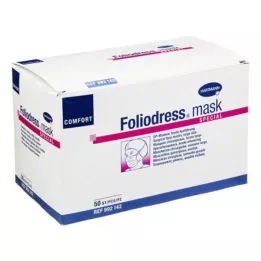
FOLIODRESS mask Comfort special OP-mask green, 50 |2| pieces |2|
FOLIODRESS mask Comfort special OP-Maske grün
$29.01

